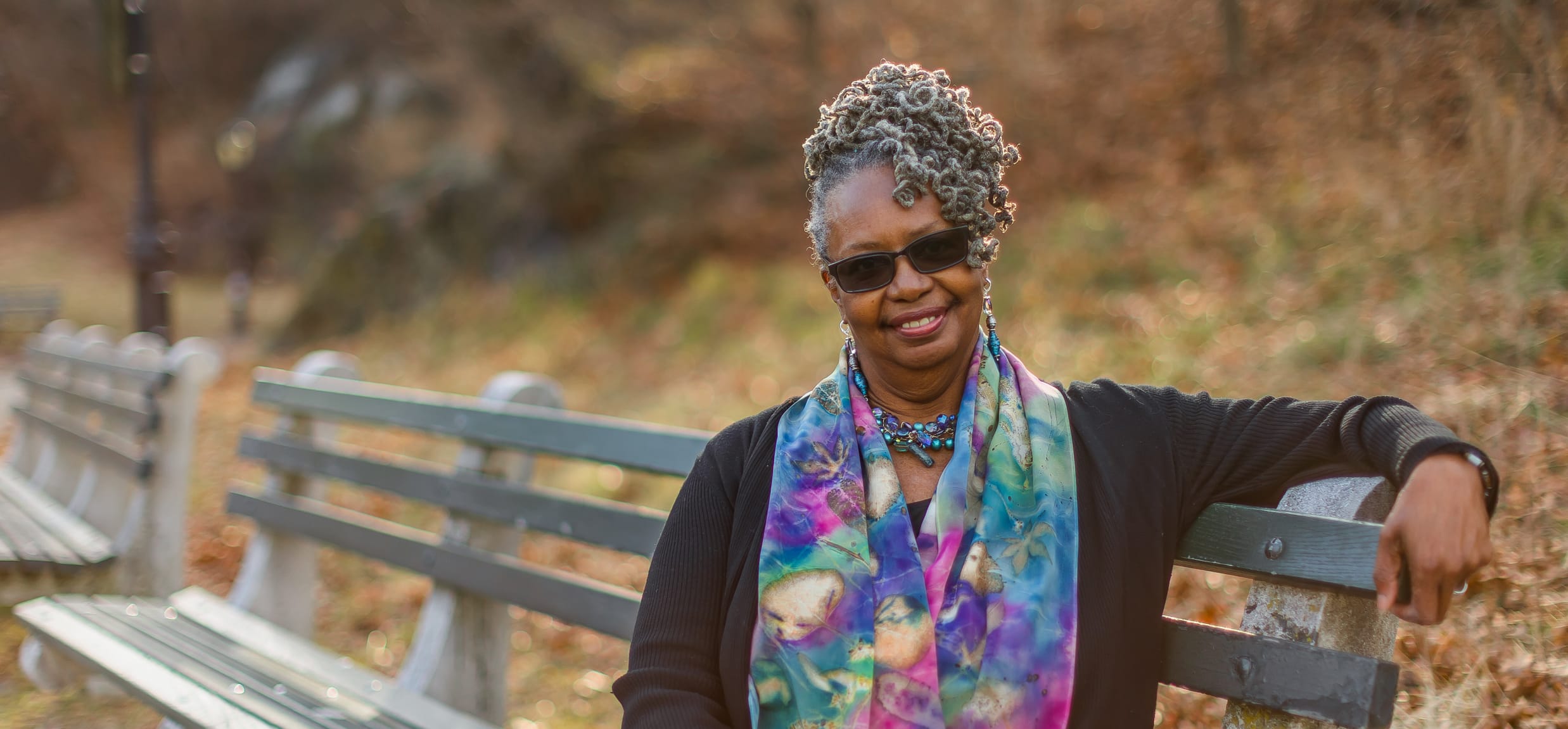Magazine
Five Questions with Harlem-Based Artist Omi Gray

Harlem-based botanical artist Omi Gray creates a wide range of artwork inspired by the sights, sounds, community, and sense of belonging that Central Park provides. Omi grew up in Harlem with her mother and grandmother, both deeply entrenched in the community through their local businesses. After some time away, Omi moved back to Harlem in 1986 and has lived in the neighborhood just north of Central Park for nearly four decades.
Omi’s life has been woven into Harlem, and Central Park has served as her muse. She draws inspiration from the Park’s changing seasons, vibrant community, and natural beauty, particularly finding peace and inspiration along the Harlem Meer.
Ahead of the opening of the new Davis Center, we sat down with Omi to learn more about her creative process, her views on art as a means of bringing people together, and how Central Park is an integral part of the community she has called home for most of her life.
1) Where do you weave?
I bring my portable loom and weave yarn into fabric near the Harlem Meer, right in front of the water, as I watch the ducks, pigeons, and various other animals pass by. My morning starts by packing everything up, picking up a coffee and a doughnut, and parking myself by the Meer. I love to create, and that’s how I spend most of my time—creating.
2) What do you enjoy about working with natural materials? Do you have any favorites in the Park?
Natural dyes and natural fibers are the foundation of my artwork, and Central Park is my art supply store for botanicals. I realized that my enjoyment of working with fibers came from being in the hair salon with my mother. My mother and my grandmother both ran their own businesses in the 1950s and watching them create for the Harlem community really inspired me.
My favorite tree is the black walnut. I knew Central Park had a lot of Black Walnut trees, but I didn’t know where, so one day I walked through the Park trying to find this tree. I ended up on the east side in the 60s or 70s, where I finally found a Black Walnut tree. I came back uptown, and it started to rain in my neighborhood. I was near 110th Street in the Park, standing under a tree when something hit my head. It was a black walnut! I went searching for that tree, and it was right in my own backyard.
Now, whenever there is a rainstorm, I go to that tree and get the leaves that fall on the ground, and take them home for my Botanical Print Silk Scarves.

The Harlem Meer, along with some of the flowers and trees that inspire Omi’s creative process
3) Can you share a memorable experience along your creative journey?
One day I took my loom to Central Park to weave. So many people stopped and asked me what I was doing. I invited them to sit with me and try it. I still have the piece that was woven that day, by the hands of the people in the Park. It measures nearly 30 meters long! I just kept weaving and people kept weaving. The pieces of fabric woven in Central Park are very memorable to me. It represents the memory and energy of people passing through the Park.
4) What advice would you give to young artists or women artists in New York?
Give creativity a try. You never know, there might be an artist living inside you. I teach workshops throughout the City, and I love the experience of seeing how someone translates what I share with them—how their hands take that information to do their own thing. I particularly like taking my students to Central Park and the Harlem Meer to show them where I get my leaves from. It is helpful for people to understand the materials they are working with.

A black walnut tree in the Park
5) What excites you the most about the new Davis Center?
It will mean a lot to the Harlem community. It will bring a lot of people together. People who visit the Park from near and far will get to meet and interact with people in the community. The major theme of this project is connectivity. By opening the Davis Center, the Central Park Conservancy is [forming a reconnection—both with] the landscape [and] with the[ir Park] neighbors.
I want people to continue coming: to commune here at the Meer, to meet new people, and have the wonderful experience of being in Central Park.
Paige Host is a freelance writer for the Central Park Conservancy and an avid birder, runner, and frequent visitor of Central Park.

Construction is currently underway at the Harlem Meer; the Davis Center project reimagines its surrounding landscapes across the Park’s north end and brings visitors closer to the natural world.
Receive news and updates on the Davis Center by signing up for our neighborhood newsletter:



